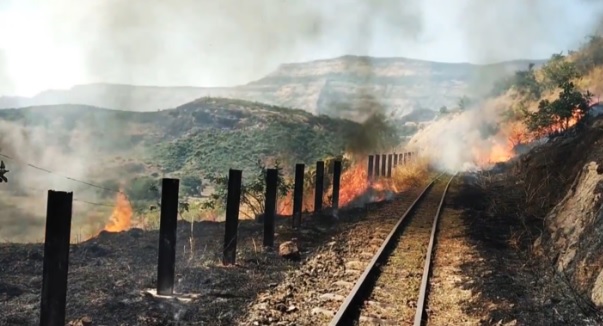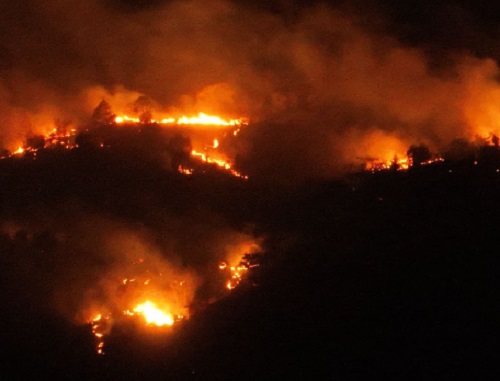Wildfires
Uncontrolled wildfires wreak havoc on ecosystems and communities, leading to extensive and multifaceted losses. These fires, often occurring on hills and fallow lands, have far-reaching consequences: .
1. Massive Biomass Destruction: Wildfires consume vast expanses of biomass, including dry grass and weeds. This not only results in the loss of valuable plant life but also releases significant amounts of carbon dioxide and heat into the atmosphere, exacerbating global warming.
2. Disruption of Soil Biodiversity: The intense heat and destruction transform organic matter into ashes, severely disrupting the soil's food chain. This includes the loss of both microscopic and macroscopic soil biodiversity, which is crucial for maintaining soil health and fertility.
3. Loss of Mesophilic Biodiversity: Wildfires decimate various forms of mesophilic life, including reptiles, birds, burrowing animals, and other wildlife. This loss significantly impacts the ecological balance and biodiversity of the region.
4. Destruction of Vegetation at Various Stages: The fires destroy vegetation at all stages of growth, from seeds and seedlings to mature plants. This setback pushes back the green cover, affecting the area's overall ecological health.
5. Soil Erosion and Reduced Water Infiltration: The intense heat and subsequent loss of vegetation lead to soil erosion. The valuable soil cover is washed away, resulting in rock outcroppings that prevent water infiltration and hinder the recharging of local aquifers.
6. Triggering of Landslides: In certain critical areas, the destabilization of hill slopes due to wildfires can trigger landslides, posing additional risks to both the environment and human settlements.
7. Extensive Wildlife Casualties: A wide range of wildlife, including insects, rodents, pangolins, civet cats, mongooses, juvenile birds, and reptiles, fall victim to these fires, leading to a significant loss of life and disruption of local ecosystems.
8. Destruction of Property and Livelihoods: People living near forested areas suffer as their properties, including horticulture orchards, are destroyed. This not only leads to economic losses but also disrupts local communities and livelihoods.
9. Threat to Human Health and Safety: Forest workers and others involved in firefighting efforts face significant health risks and threats to their lives. The physical and psychological impact on these individuals is a major concern.
The implementation of the Saguna Vansanvardhan Technique (SVT) offers a comprehensive approach to mitigating these losses. By preventing uncontrolled fires, promoting soil regeneration, and enhancing water storage and biodiversity through specific planting strategies, SVT aims to restore and protect these vulnerable ecosystems effectively.

"An alarming close encounter: Forest fire encroaches upon the iconic Matheran toy train track, showcasing the urgent need for effective fire management and environmental protection in this cherished natural landscape."
The primary causes of forest fires are often human-related, with natural incidents being relatively uncommon. The following points elaborate on the key human activities leading to these fires:
1. Local Activities for Personal Gain: Many forest fires are ignited by local individuals engaging in activities such as collecting dry wood for fuel, harvesting Mahua flowers for brewing wine, gathering honey, and other forest resources, often with minimal effort.
2. Clearing for Hunting Purposes: Hunters frequently start fires to clear forest undergrowth that hinders their pursuit of birds and animals.
3. Tourist Negligence: Carelessly discarded lit cigarettes by tourists in forest areas are a common cause of wildfires.
4. Electrical Infrastructure Issues: In areas where live electric wires traverse over mountains or through grassy regions, the wires can sometimes clash, producing sparks. These sparks can fall onto dry grass, leading to a forest fire.
5. Accidents During Preventive Measures: On occasion, while forest guards are creating firebreaks – clearings made to prevent the spread of fire – these lines can be unintentionally breached, resulting in wildfires.

"Nighttime Forest Fire: This photo shows a huge fire in the forest at night. It was too big to stop. A reminder of how powerful and dangerous fires can be."